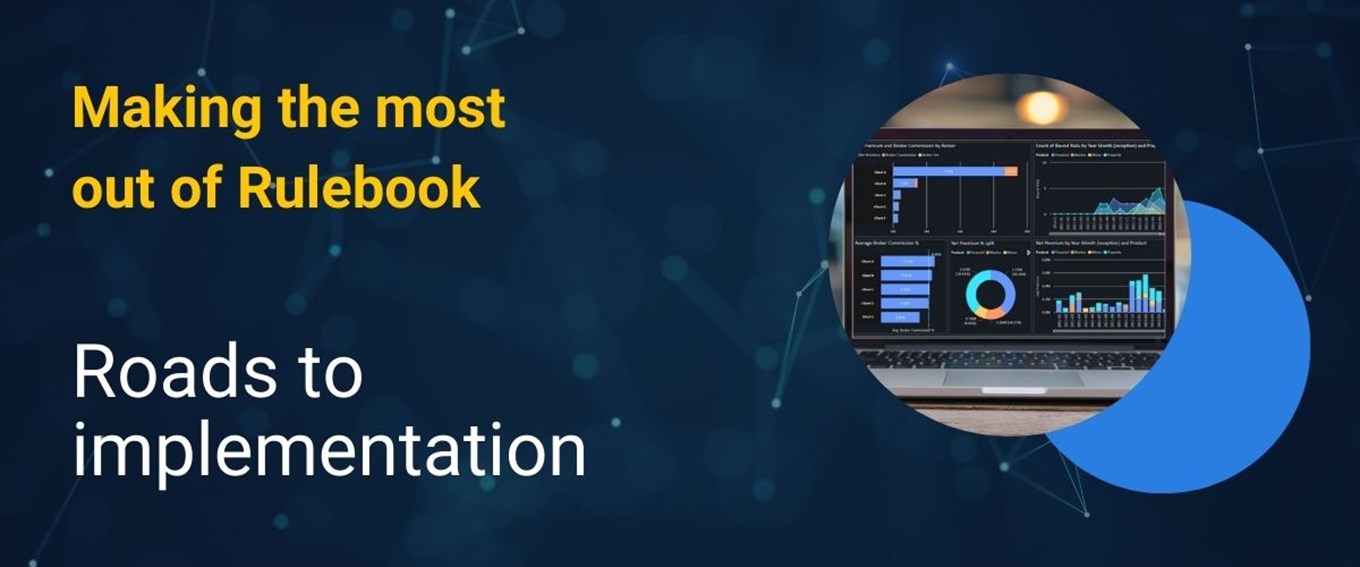Making the most out of Rulebook: roads to implementation
News -- 22 August 2024
Author: Marketing

As a solutions provider, we often obsess about customer success. We want our clients to have the best experience they possibly can so that they are able to use the products we create to grow their business and assist their operations. Even though we work hard to provide support and training throughout, there are always some aspects that are out of our hands. Implementation is one area where we often see clients make minor mistakes that risk undermining their overall enjoyment of the solution.
In the case of Rulebook, our dynamic pricing rules engine, we have identified three common implementation models our clients use. While all of them are suitable options in their own right, there are situations where they are more or less pertinent. Different kinds of organisations have different needs: your size, technological maturity, deal flow and change management ability should be used as clues to determine which of these models suits best. To that effect, we would like to share a few tips and tricks that can help you start your Rulebook journey on the right foot:
- The independent, do-it-yourself model
In this model, the client licences the product and then builds it themselves. It is most commonly used by big corporate firms, who already have in-house resources in place that can successfully implement new technology. They are likely to have teams who are experienced in transformation and change management. Sometimes these teams have experience with Rulebook in particular from previous roles.
The strength of this option lies in its alignment with the business, as internal teams have the ability to understand the intricacies of the company and are able to adjust their planning according to business needs. For example, they can arrange testing phases for moments when transactions slow down so that users are not preoccupied by competing demands.
Conversely, these teams might lack current product knowledge. In that case, it is important that they engage regularly with their Verisk representatives so they can keep up to date with product developments, upcoming features and capabilities. They can also access dedicated Rulebook training resources.
- The Verisk support throughout model
In this case, the client not only purchases a software licence from Verisk but also its implementation. This option is frequently chosen by clients who are deploying a solution like Rulebook for the first time. They could either be a small company with fewer internal resources, or a large company on a tight deadline, with significant pressure to deliver, that prefers to outsource this specific project.
The main obstacle to success is a potential lack of ownership on the client side. Even if the implementation itself is outsourced, internal resources who understand the business timeline still need to be allocated to ensure that the project runs smoothly. They can make sure that the timing of each milestone is appropriate and does not interrupt business, that implementation creates the least amount of hassle for users and that stakeholders are engaged and collaborative. These stakeholders include end users, who should be involved from the testing phase, and change champions who can advocate for the benefits of the new tool and help users adopt it in their operations.
- External consultant support model
Similarly to the first example, the client licences and implements the product. But, instead of using an internal team to deploy it, they request the services of an external consultancy firm. This third party is usually one that has a pre-existing relationship with the company, and has likely successfully delivered other projects for them. Larger companies tend to have this kind of partnership in place more often, but we have seen smaller companies use consultancies before as well.
The main risk with this model is evaluating the third party on the basis of the existing relationship, instead of delving into the current brief. It is important to consider if they are the best solution in this instance, if they are familiar with Rulebook and how it fits into operations. Enough time needs to be allocated for them to plan the project and understand business needs in order to set realistic goals. They also need to be given access to relevant institutional information and the ability to collaborate with internal project champions and sponsors. As far as product knowledge goes, Verisk can provide the same level of access to training, support and dedicated resources to third party consultants that employees would receive.
By selecting the right model that aligns with your organisation’s unique needs and capabilities you can make informed decisions that maximise the benefits of Rulebook. Our experience shows that the key to a smooth implementation lies in thorough planning, regular engagement with Verisk representatives, and active involvement of stakeholders.
Related Product
Rulebook
Pricing, underwriting and distribution, for even the most complex classes of business.